If you want to truly craft a definitive sound on your guitar, you cannot go wrong with a dedicated pedal board setup. Guitar pedals provide so many luscious effects that you really will be able to explore the true abilities that are accessible with an electric guitar.
Chaining them all together using one of these devices will allow you to delay, vibrato, raise the output volume for solos, make your guitar wah, and even cause your guitar tones to echo. Recently, I have been looking for a better pedal board than my old clunker.

Credit: Roland Corporation
Top Pick: Boss BCB-60 Deluxe
Setup is perfectly attuned to any guitarist’s needs when it comes to organizing and making your stomp boxes pedals easy to find and use.
Why You Should Trust Us
I have been playing the guitar for as long as I can remember. I have acoustics that I play when I am strumming around, and have hollow body electrics that work great when I want to go in-between electric and acoustic.
I also have several solid-body electrics that I use when I’m hooked up to my customized pedal board.
Since I’ve been searching for a replacement pedal board, I’ve done a lot of thorough research so that I could find one that has a lot of great features and will accommodate a wide variety of effects.
It needed to be sturdy, easy to setup, and most importantly gig-ready because I play in a weekend band that plays all over the state.
I’m one of those guys that you’ll see playing licks at your local Guitar Center, so that’s where I began my research. My friend Jorge works at the Guitar Center near me at Ridge Hill here in Yonkers.
Jorge was cool enough to let me sample more than 30 different pedal board setups, which is how I discovered that the Boss BCB-60 Deluxe is truly exceptional for most guitarists.
To be thorough, I decided to check some more before I made a decision, so I hit up a ton of guitar websites and retailers; just so I could proceed from an educated perspective.
How to Choose the Best Pedal Board
I am going to go into the review for the Boss BCB-60 Deluxe Pedal Board, but before I do, I want you to understand the world of the pedal board and why these items are so useful for electric guitarists.
It is important to understand that each pedal is unique and there are several great pedals and brands of pedals to choose from. I always make sure that the pedals I choose have a small enough form factor to easily fit inside my pedal board.
For larger pedals, like my Crybaby Wah, you will have to have them outside of the body of your board.
Why Bother?
Well, in theory, you could simply throw your pedals in a gig bag and simply plug them in when it’s time for your gig. Technically, you don’t need a pedal board to play with all your favorite effects stomp boxes.
This being said, pedal boards are an amazing tool that makes quickly setting up and preparing your available sounds for a gig a cinch.
They are huge time savers because when you are at a multi-gig venue, you will need to setup and be ready to play quickly.
No one loves it when another musician uses your gear without your permission and using someone else’s setup is never great either. Pedal boards let you have all of your stomp boxes daisy chained together and ready to plug in on the fly.
This means that if you are sandwiched between two unassociated acts, you can plug in the two ends of your pedal board into your amp and get going in less than five minutes. This is also useful in the recording studio where your time is very expensive.
Essential Pedals to Start Out
Most gearheads agree that every electric guitarist should use these pedals on their pedal board so that they can generate some of the best sounds possible for their setup.
I have ordered these to focus on the essentials first.
Overdrive Pedal
Any rock guitarist or even blues guitarist really should have at least one overdrive pedal in their pedal board. These add some of the best tone and crunch options to your guitar, and they can be used in three ways:
As a Boost – This will boost the sound coming out of your guitar, but it will not necessarily add a ton of crunch. You will have to set your amp to its dirtiest or full gain. Then set your pedal to clean for a Fender-esque sound.
Then, you will need to set the volume on both the pedal and the amp to a relatively high level. Next, match up your tones. You can activate the foot switch in the middle of the tone for a precision setting. The resulting sound will be boosted without a lot of distortion.
As a Partial Gain Device – This is a very blues-friendly option. To achieve this, simply dirty up the tone on your amp to a mid-level and do the same to your pedal. Boost the volume on the pedal to a relatively low point. You will get a bit of crunchiness in your tone with this setting.
As a Full Gain Device – This will be the crunchiest and will provide a tone that’s perfect for metal or industrial. Use your amp’s cleanest sound and let the pedal manage all of your distortion. Even out the volume levels and you are done.
Wah-Wah Pedal
The wah-wah or just the wah pedal is one of the most iconic-sounding options available for your new pedal board.
This was one of the first effects pedals made. The Dunlop Crybaby Wah was the original, but you can use any wah pedal in your pedal board.
For the most part, you will be using this to add a little funk to your guitar, and for most models, you can simply adjust the knob to remove or add the wah tone to your notes.
Delay Pedal
A delay pedal will add an extra accompanying tone to your guitar notes. Most modern digital or analog delay pedals will allow you to:
Copy – This is the standard digital delay effect. If your delay pedal is a digital delay, the echoes of the tone will be exact copies of the original one.
Analog Copy – With this type of delay option, each of the echoes that follow your original tone will get progressively crunchier as they reverberate.
Modulate – This can save you on a chorus pedal, though some like delays and chorus pedals in their pedal board.
Reverse – This produces a counterpoint to your sound by producing a tone that’s the exact opposite of the note or chord you played. This makes for a fuller delay sound.
Distortion Pedal
Many think that the distortion pedal is the same as the overdrive, but each of these pedals adds unique sound options. With this type, you will be able to choose from several sound options in your pedal board:
Fuzz – A heavier bassy sound wave is added to your tone. This is the perfect way to add a layer of fuzzy warmth to your produced guitar tone. I really recommend having a distortion pedal with this function in your pedal board.
High Gain – This is a dedicated setting on a distortion pedal, which is a change up from the high gain setting on an overdrive that you have to set yourself.
This setting is designed to increase the gain of the tone to such a level that the amplifier actually starts to become overwhelmed. This will cause a harsher, more distorted sound.
Valve Distortion – Distortion pedals with this feature will use a vacuum tube to craft a very different type of distortion. For the most part, it sounds great in solos and provides a more rounded tone.
Volume Pedal
The final type of pedal for your pedal board that I wanted to touch on as essential is a volume pedal. With this pedal, you will be able to turn up your guitar’s volume up or down.
I know that setting is available on the instrument, but this pedal lets you change your volume to a preset level. This means that when it is time for a solo, you can boost your sound to the appropriate level so that you can play to the cheap seats with ease.
The Competition
After hours of testing and research, here's the final competition.
| Instrument | Rating | Current Pricing |
|---|---|---|
Boss BCB-60 Deluxe Pedal Board | Roomy enough to fit several pedals but is also light enough to truck just about anywhere |  |
Behringer PB600 | Great option for those who are not looking to spend a lot but still want quality |  |
Pedaltrain Nano PT-Nano-SC Pedalboards | Designed to be compact and very easy to transport |  |
Gator GPB-BAK-OR Large Aluminum Pedal Board | Has a large amount of space for several pedals of various sizes |  |
Gator G-TOUR PEDALBOARD-LGW | Has an aluminum valance so that it’s tough on the road and during performances |  |
Gator Pedal Board | Made of strong plywood that won’t bend or buckle under your feet |  |
Donner Guitar Pedal Board Case DB-3 | Comprised of aluminum so that you’ll know that the board will take a lot of stomping during extended play |  |
SKB 8-port Powered Pedalboard | Beautiful and roomy product that’ll give you enough room for about six smaller stomp boxes and a full-sized pedal |  |
BEHRINGER PB1000 | Able to easily install both compact and full-sized pedals in this pedal board |  |
Our Top Recommendation: Boss BCB-60 Deluxe

Credit: Roland Corporation
The Boss BCB-60 Deluxe Pedal Board really meets all my needs in a pedal board, its setup is perfectly attuned to any guitarist’s needs when it comes to organizing and making your stomp boxes pedals easy to use and find.
I loved that it was roomy enough to fit several pedals but is also light enough to truck just about anywhere. It’s very reasonably priced; you will not really have to spend much more than $200, and you can usually find one for as little as $150 on sale.
It’s also very versatile. Some pedalboards on the market are designed to only accommodate compact pedals, so that if you have my Dunlop Crybaby Wah-Wah, you will have to keep it positioned outside of the pedal board.
This is not a huge inconvenience unless you have a lot of full sized twin pedals, but having all-in-one functionality is nice. The Boss BCB-60 Deluxe Pedal Board has a very versatile setup so that you can use both compact and twin pedal options.
Since the best pedal boards will have plenty of room for at least the five or six essential pedals that I mentioned above, it is nice to see that you can easily fit this many pedals within the body of this pedal board.
It even has a soft padded exterior that will protect the cases of your stomp boxes from the rigors of the road. This is perfect for musicians who play outdoor venues where soil and rocks can scrape up the metal or plastic bodies of most pedals.
Boss crafted the external body of the pedal board of molded resin so that the pedal board would be tough enough to be placed anywhere without fear of damage.
Boss was also sure to include a bevy of pack-ins with this pedal board. Here is a listing of what you can expect to find included with the product:
- A PSC-series AC adaptor
- Three pre-cut inserts
- One spare insert
- Eight-pin parallel DC cord
- Five short L-L cables
- Three long L-L cables
- The manual
In addition to these pack-ins, Boss has included one extra that helps a traveling musician; a truly durable and road-ready portable hard shell case. Simply close it up and take it home or to the next gig.
In totality, Boss did an excellent job making a dependable pedal board that can be used for a personal beginner’s setup or for the setup of a tried-and-true road experienced professional guitarist.
Admittedly, those gearhead control freaks might want a little larger space for a true bevy of effects pedals; I believe that this pedal board will work for more than 95 percent of the guitarists out there.
Runner Up: Behringer PB600

Credit: BEHRINGER
There was one other pedal board that I came close to purchasing; the Behringer PB600. The Behringer PB600 is a great alternative to the Boss BCB-60 that usually is priced in the $75 to $150 price range.
This particular pedal board is designed to be ultra-compact so that you can easily take it where you need it to go. The case itself is very lightweight as well, which is perfect when you are hoofing it to your next show as we musicians are known to do from time to time.
While it is not quite as hardshell as the BCB-60, it does have a tough as nails construction that’ll see it survive dings and any terrain unscathed. This is because it is made of an ultra-rigid plastic that can withstand heavy impact.
Unlike the BCB-60, you will really only fit compact pedals in the BEHRINGER PB600, which is pretty much the deciding factor when I picked the BCB-60 since I have to have some space for my Crybaby.
That being said, if you have about six compact pedals, there really isn’t a better pedal board for your needs. The BEHRINGER PB600 is a great option for those who are not looking to spend a lot but still want quality.
Other Pedalboards to Consider:
Pedaltrain Nano PT-Nano-SC

Credit: Pedaltrain
Pedaltrain is one of the pedal manufacturers that have earned an iconic name amongst the gearhead community. The Pedaltrain Nano PT-Nano-SC is very different from the previous two pedals that I covered.
This pedal is designed to be compact and very easy to transport. As a result of this sizing, you’ll only really be able to fit about four or five pedals on this pedal board at its maximum capacity.
These pedals can only be the compact type, so if you want a larger twin-style pedal, it won’t really have a home on this pedal board.
Since real estate is at a premium, you’ll also want to find very flat patch cables before you attempt to daisy chain your pedals together. Otherwise, the connector jacks may actually prevent you from having a higher number of pedals on this board.
To secure each of your compact pedals, you’ll need zip ties for the Pedaltrain Nano PT-Nano. Despite its slight limitations, this pedal board really is great for those grab-and-go situations.
It’s also perfect for those musicians who don’t want to overly depend on pedals for their sound. These musicians can use a tuner pedal, a looper pedal, and an overdrive or distortion pedal on this pedal board and end up very satisfied.
Gator GPB-BAK-OR Large Aluminum w/ Carry Bag, Orange

Credit: Gator Cases, Inc
Clearly, Gator was going for simplicity when they designed the Gator GPB-BAK-OR Large Aluminum Pedal Board. This pedal board is a sheet of ridged and vented aluminum that has a large amount of space for several pedals of various sizes.
I really loved the fact that this particular pedal board is angled. This means that the stomp boxes will be much easier to control with your foot at this foot-friendly angle.
You’ll be able to fit both compact and twin pedals on this pedal board. On top of this, there’s plenty of pedal real estate as well, as you’ll easily be able to fit eight or nine compact pedals on the board and still have enough room for a full-sized Crybaby Wah.
While this amount of space might make you think that the portability of this product was sacrificed, this is not actually the case. Gator smartly included a carrying case with this product so that you can easily heft it from gig to gig.
Since this product is made of strong aluminum, you’ll be able to easily stomp your stomp boxes without worrying about denting the material of the pedal.
The only weakness with this product is that the built-in power clamp can be too small for some pedal power adaptors.
Gator G-TOUR LGW Tour Series, Large

Credit: Gator Cases, Inc.
Our next pedal board is another Gator pedal board that has a lot of built-in versatility. If you’re looking for something without a lot of frills that can manage just about any pedal, then this is definitely a great option for you.
When I tried this pedal board out, I connected a Boss ME25 Guitar Multi-Effects Pedal, some Behringer compact pedals, and a full twin pedal, so there’s definitely not a lack of options on this board.
Despite its simple delivery, the Gator G-TOUR pedal board is clearly designed with the professional in mind. The box is very large and even a tad heavy at 12 pounds, but it’s solidly built and looks like something that you can expect in a professional musician’s toolkit.
This pedal board has a plywood construction on many of the surfaces but has an aluminum valance so that it’s tough on the road and during performances.
The inner surfaces are plush so that your pedals are well-protected, and the board is secure in its case because of a heavy duty locking system.
You also won’t have to zip-tie your pedals into place because this board uses a 3M dual lock fastener system that’s secure and easy to release. While it isn’t the best board to heft, this setup definitely has a lot going for it, especially if you have a few roadies to help out.
Gator w/ Carry Bag, Pro Size (GPT-PRO)

Credit: Gator Cases, Inc
Our final Gator pedal board is a nice in-between model that at once has a lot of space for numerous pedals and also has a very convenient carrying case so that you can quickly take your setup with you as you travel.
The travel bag is even made of a softer material that’s easy to carry comfortably. This nylon padded case is still strong enough to protect your valuable pedals from taking unnecessary damage.
To help carry it, the case also has a strong handle that will not break under the weight of your pedals. To secure your pedals to this pedal board, Gator has included a face that is covered in Velcro.
All you’ll have to do is place the included attachment Velcro onto your pedals and attach them where you’d like them. Composition-wise, this pedal board is made of strong plywood that won’t bend or buckle under your feet.
This plywood is coated in Tolex so that the product also has a softer feel. The pedal board also has the ability to be used at a slant, which is perfect for being able to depress your pedals as you play.
There’s also a lot of room for pedals of twin and compact sizes. The biggest weakness of this pedal board is the fact that there’s really no break between the top and bottom rows, so your pedals can shift a bit.
Donner Guitar Case DB-3 Aluminium w/ Bag

Credit: Donnerdeal
This Donner pedal board is a fairly straightforward pedal board that comes with a case for easy transport. You can even put a strap on the case if you need an easy-to-carry pedal board.
I highly considered this product because of how easy it would be to strap my hollow body and this onto my shoulders. The form factor of the pedal board itself is very similar to the Pedaltrain product that we featured except for the fact that this board can hold a significantly higher amount of pedals.
You’ll attach the pedals with Velcro rather than a clamp system, so it’ll be much easier to quickly pull off your pedals and replace them with other effects when the desire strikes you.
The pedal also has a lot of space so that you can attach larger or more compact pedals to its body with relative ease. The one weakness of this is the fact that the bag is a little thin, so a larger pedal will definitely bulge a bit in the padded case.
The body of the pedal board itself is comprised of aluminum so that you’ll know that the board will take a lot of stomping during extended play. The cable management is reasonable, though not every power supply will work seamlessly with this product.
SKB 8-port Powered – 9VDC power, Includes Gigbag

Credit: SKB Corporation
The SKB 8-port Powered Pedalboard is an excellent, powered pedal board that is relatively versatile and doesn’t cost a whole lot of cash. As a matter of fact, you’ll usually be able to find this pedal board for less than $80.
When it comes to space, this is a beautiful and roomy product that’ll give you enough room for about six smaller stomp boxes and a full-sized pedal. Since it’s powered, you’ll be able to provide juice for up to eight standard pedals as it has built-in 9V DC output jacks.
Unfortunately, this product isn’t very sturdy as it is made from injection-molded rubber modified styrene, but it will definitely work in a pinch. This isn’t to say that this pedal board will crack or dent; it should last through several gigs, but it will feel a bit flexible as you use it.
I really liked the fact that the power supply has velcro on it. This means that when you’re transporting this pedal board in its case, the power supply will be sturdily attached and won’t shift around.
This product also only comes in one polarity – center negative, but that’s compatible with the majority of pedals on the market today. This product also has Velcro strips for all of your pedals.
BEHRINGER PB1000

Credit: BEHRINGER
If you liked the Behringer PB600 like I did, this is also a great Behringer pedal board that simply offers more pedal real estate. You can easily store about 12 effects pedals on this product, which is the largest capacity of pedals boards available in this guide.
The case for this pedal board is nice and durable; it is of a hard body design that is very gig-friendly. This is another powered pedal board, so that adds a bit of versatility to the overall product.
You’ll be able to easily install both compact and full-sized pedals in this pedal board. Each pedal is protected by strong foam cushioning so that you won’t have to worry about damage while transporting the pedals.
I really liked that this product has so many spots for pedals, but the reason that I didn’t consider it is because I typically don’t use more than six pedals when I’m playing.
For its capacity, this product is very reasonably priced. You can find it in most places for less than $150. Also, there’s enough power output to provide enough juice to every pedal without much strain.
This also isn’t a metal pedal board, it’s comprised of plastic, so if you prefer the stability and strength of aluminum, then this board may not be for you.
Wrapping It Up
A pedal board is a great tool for a dedicated electric guitarist. Having the effects so easily accessible with just a quick footswitch adds a ton of versatility to your sound. The Boss BCB-60 Deluxe is definitely my top pick, and I think it will work great for the overwhelming majority of guitarists; professional or amateur.
Many of the other pedal boards that I have featured here are relatively cheap, so if you need a product that is reliable and can handle a few choice sound effects, then you will not have to spend much more than $100.
If you would like a more premium experience, then I have covered a few of those as well. In any situation, I hope that this pedal board guide has provided you with the information you need to find your next board with ease.
Sources
- BassLife (2015). Gator Cases G-Tour Pedal Board LGW Initial Review Opening the Box
Retrieved from https://www.youtube.com/watch?v=poLm5S5n1FI - Joe Charupakorn (2010). The Premier Guitar Pedalboard Survival Guide
Retrieved from http://www.premierguitar.com/articles/The_Premier_Guitar_Pedalboard_Survival_Guide - Barry Cleveland (2014) Pedalboard Buyer’s Guide
Retrieved from http://www.guitarplayer.com/accessories/1019/pedalboard-buyers-guide/48203 - Danny Cruz, The Absolute One Stop Guide to the Guitar Pedal Board
Retrieved from http://sixstringsensei.com/880/the-absolute-one-stop-guide-to-the-guitar-pedal-board/ - Christopher Scapelliti (2016) How to Build the Ultimate Pedal Board Retrieved from http://www.guitarworld.com/video-guitar-worlds-guide-building-pedal-board


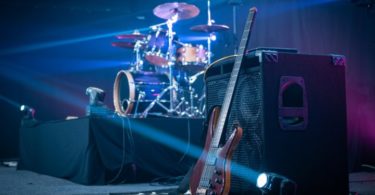

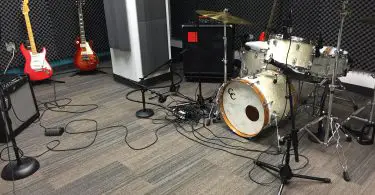
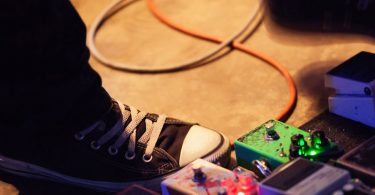
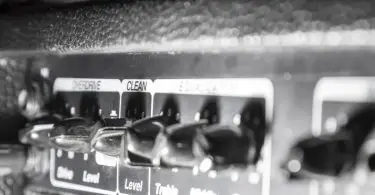
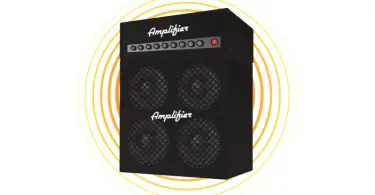
Start the discussion at talk.hearthemusicplay.com